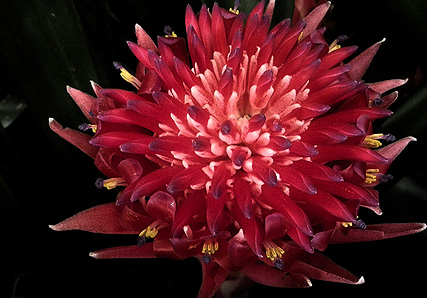Search
Democracy Links
Member's Off-site Blogs
april 2010

Sydney has experienced its fifth warmest April on record with a month of balmy nights and little rain.
But don't put away the warm clothes just yet with predictions that winter is on the way; it's just running a little late.
The average April minimum temperature was 1 degree above the average of 16 degrees. Combined with high humidity and little wind, temperatures rose.
With the average April maximum of 25 degrees, Sydney recorded its second highest maximum temperatures averages in 151 years.
Meteorologist for Fairfax company weatherzone.com.au, Samuel Terry, said a number of high pressure systems meant pleasant weather, but, in bad news for our water catchments, very little rain.
http://www.smh.com.au/environment/sydney-has-fifth-warmest-april-in-151-years-20100430-ty17.html
===========
http://www.abc.net.au/catalyst/antarctica/
===========
Russian prime minister Vladimir Putin has raised the alarm over the Arctic environment on a visit to Russia's northernmost outpost.
In the latest expedition aimed at boosting his strongman image, Mr Putin donned Arctic gear and even caressed a polar bear.
The Russian archipelago of Franz Joseph Land is deep in the Arctic at a latitude of 80 degrees North.
Mr Putin made the visit on an unspecified date in the last few days, but state television channels released the images and comments in a coordinated move clearly aimed at ensuring a maximum media impact.
Over the last year the prime minister has made several visits to far-flung Russian territories to burnish his tough-guy image.
In the most recent images, he was shown taking part in a bid to weigh and fix a collar to an anaesthetised wild polar bear.
"The bear could wake up at any moment," the state television commentary breathlessly intoned.
The process completed, Mr Putin said "excuse me" to the scientists accompanying him and knelt down by the 230-kilogram bear, stroking the animal and even shaking his paw.
"The bear is the master of the Arctic," the Russian strongman told the television.
"[But] the polar bear is under threat. Their population is currently only 25,000 individuals.
"The reduction in the surface of the ice sheet, the melting of the ice, all this adds complications to the living conditions."
http://www.abc.net.au/news/stories/2010/04/30/2886670.htm?section=world
====================
Numbers of species, size of populations, diversity within ecosystems: all these are going down.
Habitat loss, the spread of harmful alien species, depletion of fish stocks: all these are going up.
Joining the dots and concluding that the second batch of things causes the first isn't a leap of deduction likely gain you a Nobel Prize.
The Science paper, compiled by an impressive array of scientists across disciplines led by Stuart Butchart from the UN's World Conservation Monitoring Centre and BirdLife International, does three things that may prove useful.
• It sorts out what we know and what we don't know, and in which regions
• It refines measurements of how the various threats are changing
• It puts all of this together in a global whole
As usual, the global picture that scientists would like to have is in reality a patchwork of local and regional pixels, with the added constraint that the time-line for measurements in many parts of the world starts only a few decades ago.
If the availability of good data on something as simple as temperature is patchy across the world, imagine how much patchier it is when it comes to issues such as the rate of nitrogen deposition or the changing abundance of birds.
Where things can be assessed from published data - for example, the size of protected areas declared by governments - you can obviously get a more precise figure than where you have to go out and do field measurements in 270 patches of forest with four day of hiking between them.
So, for example, the researchers concluded that the spread of invasive alien species can only really be assessed in Europe at this stage.
http://www.bbc.co.uk/blogs/thereporters/richardblack/
======================
Meanwhile, I have personally noticed, many plants bloom twice or three times more per year than ten years ago. In the case of some bromeliads (picture at top), the plants have twice as many "pups" that flower, than before..
- By Gus Leonisky at 30 Apr 2010 - 10:25pm
- Gus Leonisky's blog
- Login or register to post comments
Recent comments
10 hours 25 min ago
12 hours 9 min ago
12 hours 20 min ago
12 hours 36 min ago
12 hours 49 min ago
13 hours 39 sec ago
13 hours 5 min ago
20 hours 55 min ago
21 hours 18 min ago
22 hours 47 min ago